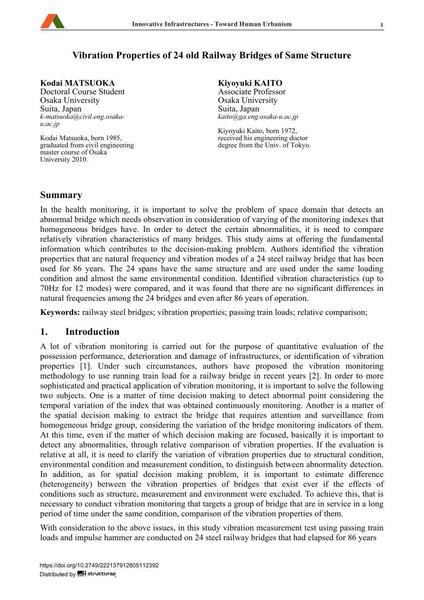Vibration Properties of 24 old Railway Bridges of Same Structure

|
|
|||||||||||
Bibliographic Details
| Author(s): |
Kodai Matsuoka
Kiyoyuki Kaito |
||||
|---|---|---|---|---|---|
| Medium: | conference paper | ||||
| Language(s): | English | ||||
| Conference: | 18th IABSE Congress: Innovative Infrastructures – Towards Human Urbanism, Seoul, Korea, 19-21 September 2012 | ||||
| Published in: | IABSE Congress Seoul 2012 | ||||
|
|||||
| Page(s): | 1702-1709 | ||||
| Total no. of pages: | 8 | ||||
| DOI: | 10.2749/222137912805112392 | ||||
| Abstract: |
In the health monitoring, it is important to solve the problem of space domain that detects an abnormal bridge which needs observation in consideration of varying of the monitoring indexes that homogeneous bridges have. In order to detect the certain abnormalities, it is need to compare relatively vibration characteristics of many bridges. This study aims at offering the fundamental information which contributes to the decision-making problem. Authors identified the vibration properties that are natural frequency and vibration modes of a 24 steel railway bridge that has been used for 86 years. The 24 spans have the same structure and are used under the same loading condition and almost the same environmental condition. Identified vibration characteristics (up to 70Hz for 12 modes) were compared, and it was found that there are no significant differences in natural frequencies among the 24 bridges and even after 86 years of operation. |
||||
| Keywords: |
steel railroad bridge passing train loads vibration properties relative comparison
|
||||
